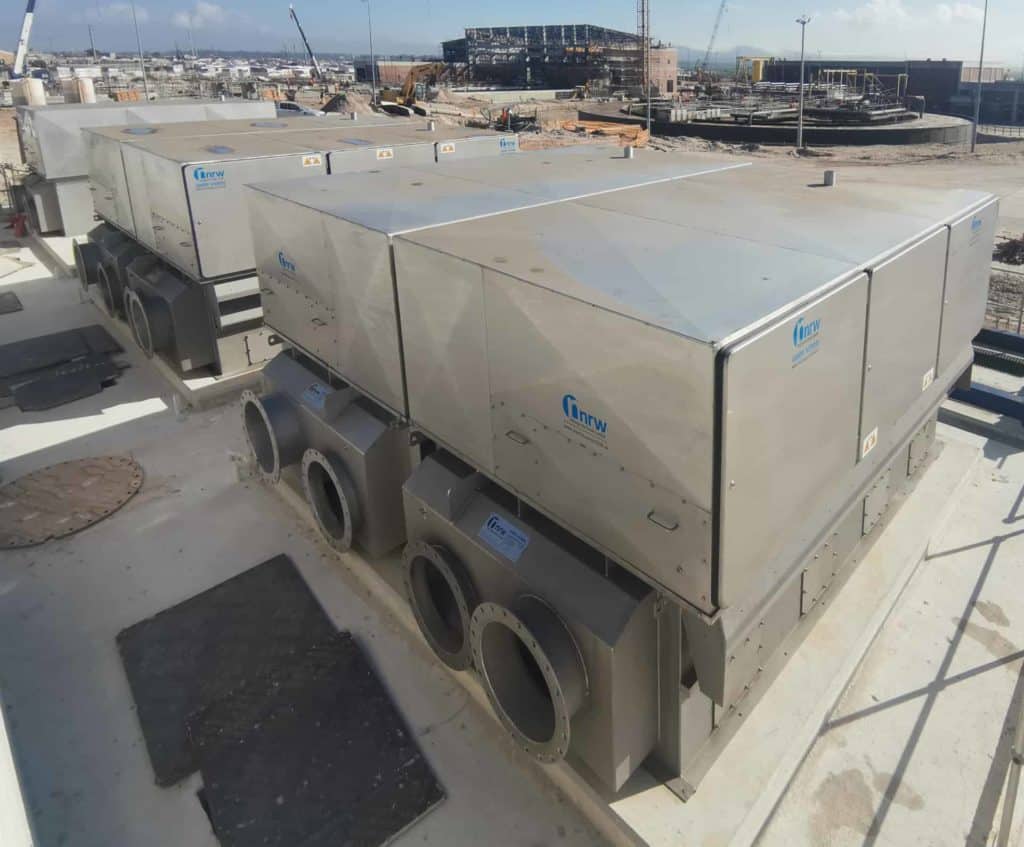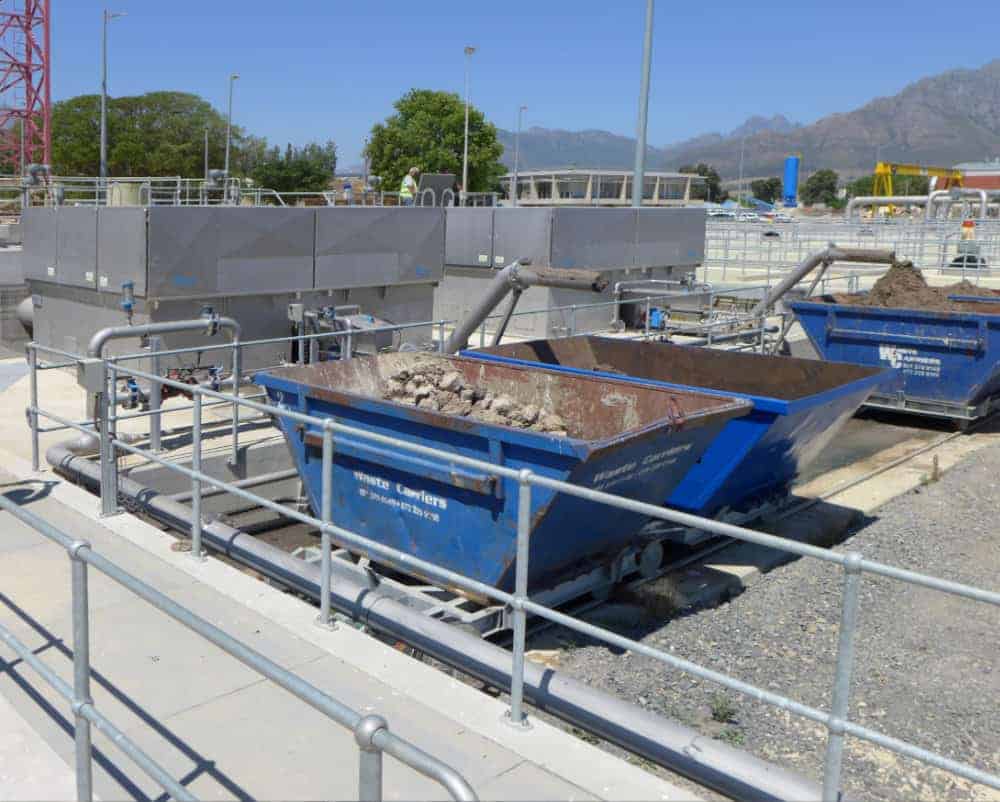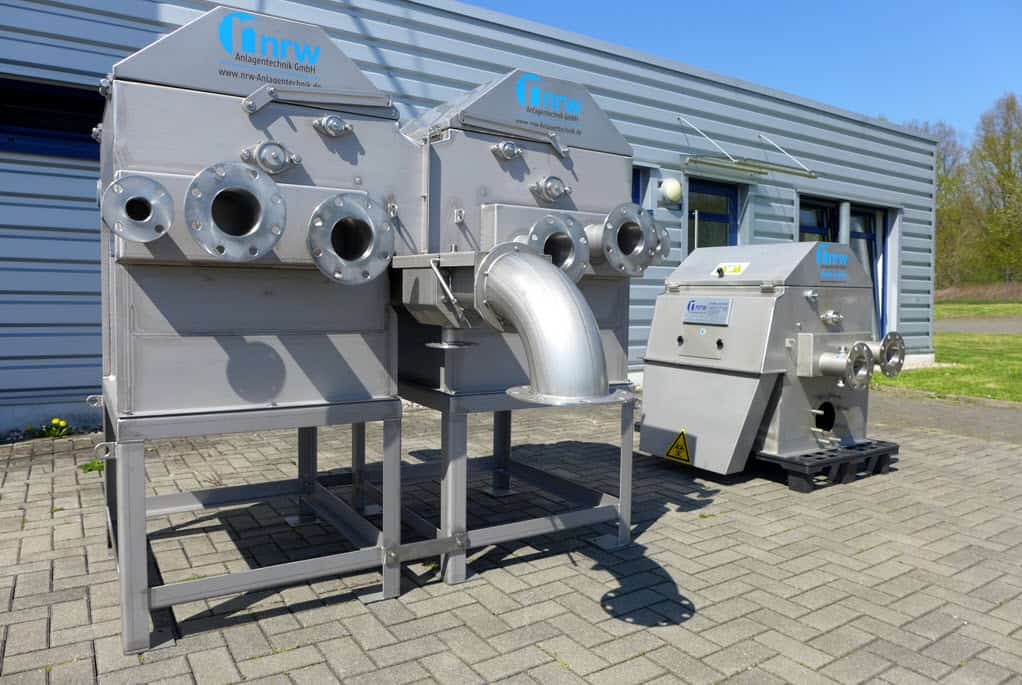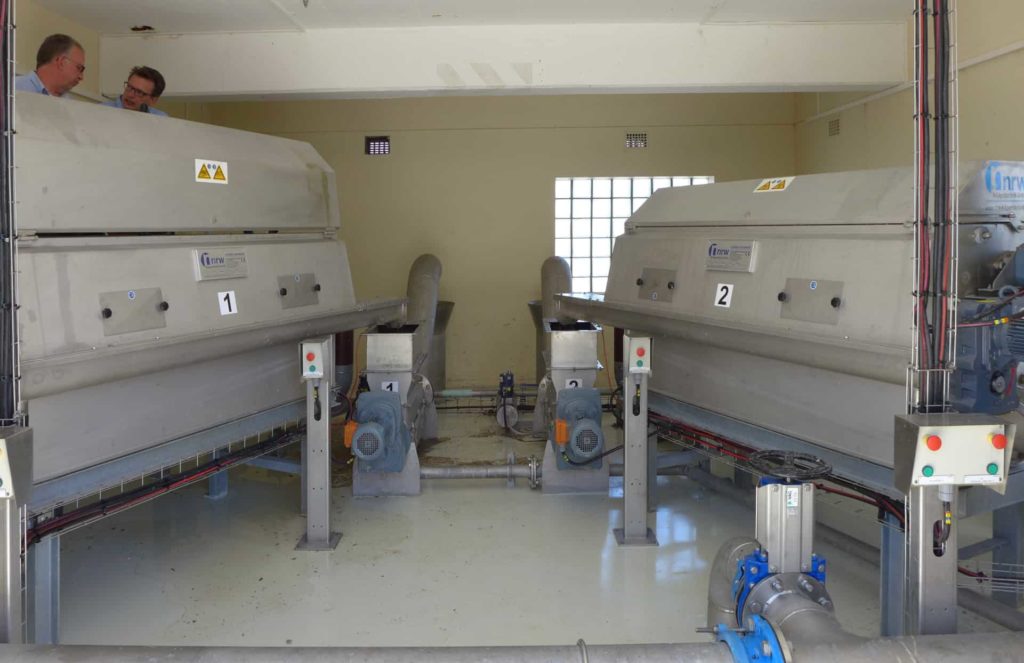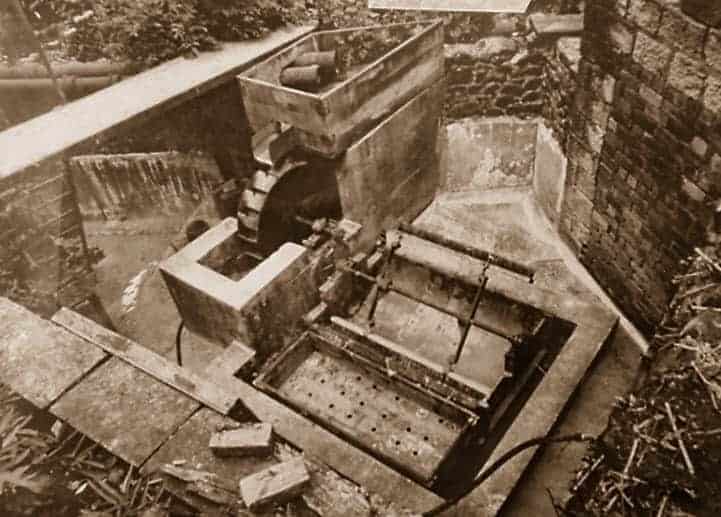A screen that pays off: The nrw contec screen
Install, power up, forget.
For years, sewage treatment plant operators worldwide have relied on nrw contec screens to solve their wastewater problems. Just as numerous industrial companies have their process or cooling water cleaned by the clever screen.
It is the mix of stability, simplicity and low-wear design that makes a nrw contec screen so durable.
A nrw contec screen is quickly installed, reliable and economical in every respect. The principle of the nrw contec screen has proven itself for almost 100 years and is continuously improved by us.
How screenings simply fall by the wayside
How a nrw contec screen masters water purification
The function of the well-tried nrw contec screen is simple:
The horizontally flowing waste water first reaches the semicircular perforated screen plate, which retains the screenings.
Slowly rotating brushes reliably convey the screenings over the edge of the perforated screen plate into the lateral screenings discharge.
At the same time, the water cleaned in this way “falls” freely downwards from the perforated screen into the outlet. In this way, the screen ensures an exceptionally high degree of separation of solids and, in particular, fibres.
This proven method has remained unchanged in principle since its invention.
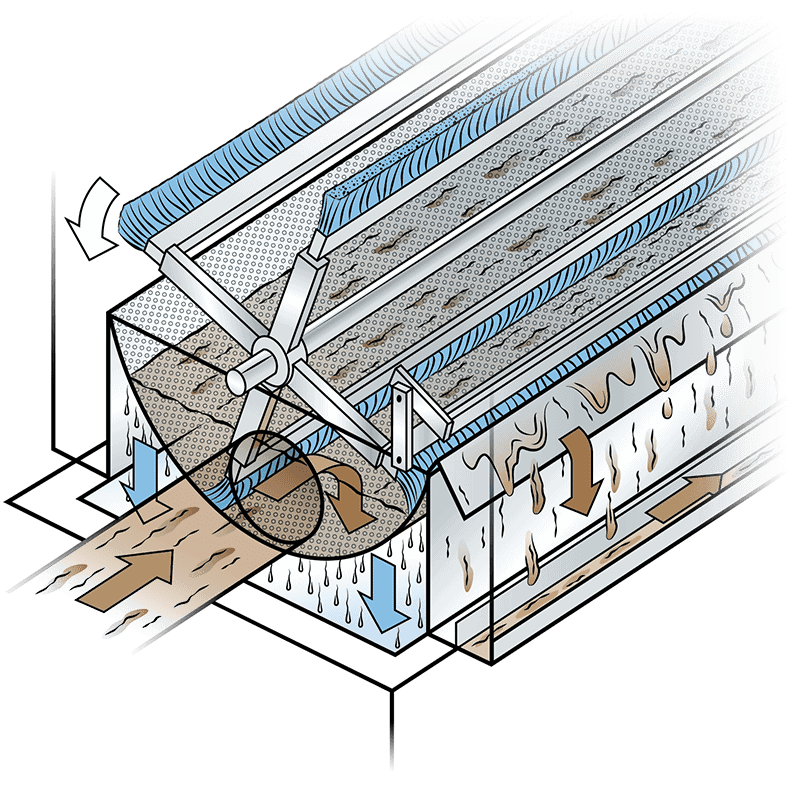
Withdrawal of river water
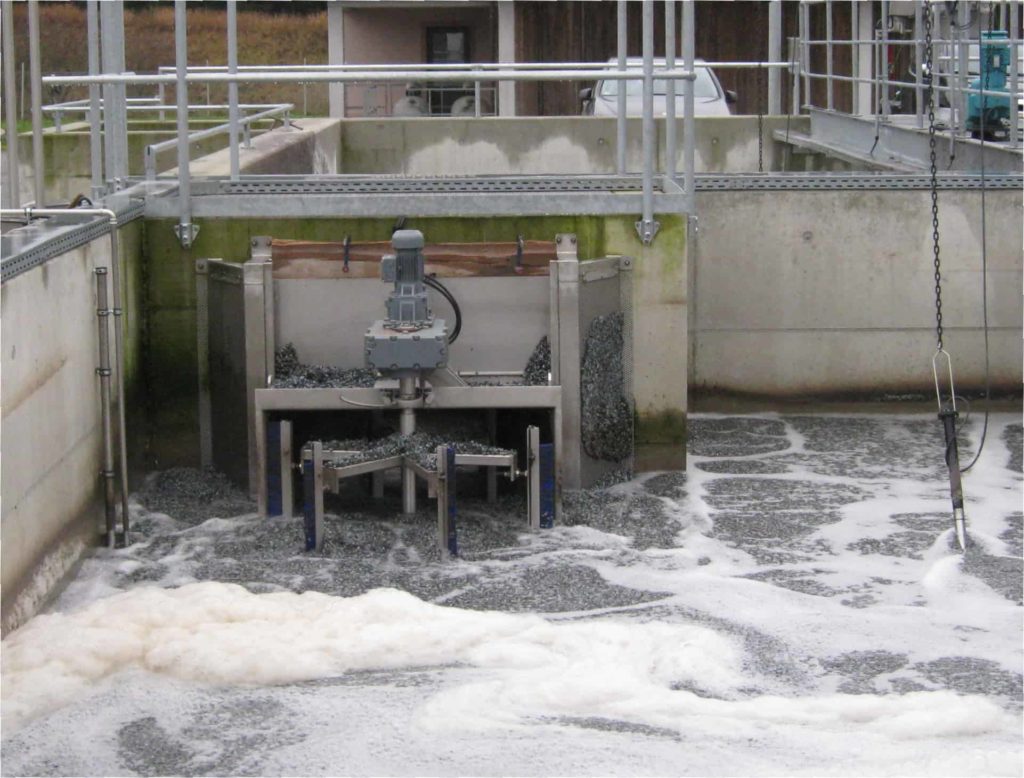
For river water extraction, the nrw contec screen is mounted on the river bank. Here it reliably prevents the cooling water or extinguishing water pump from sucking in leaves, branches, fish, fish lichen and other floating matter.
In these industries clean nrw contec screens
Automotive
Chemical companies
Brewery wastewater
Dye works
Fish processing
Bottle rinsing
Poultry Processing
Tanneries
Vegetable processing
Fur processing
Municipal wastewater treatment plants
Cooling water withdrawal
Canning factories
Food Processor
Leather factories
Malthouses
Dairies
Fruit processing
Paper industry
Slaughterhouses
animal body recycling
Zoo / Animal Park

